Inside the secret spaces on planes where passengers are banned
The next time you take to the skies, keep your eyes peeled for the secret compartments hidden inside airplanes.
These cabins, known as ‘crew rest compartments’, allow pilots and flight attendants to get much-needed rest time during long-haul flights. CNN Travels reported. But they are strictly prohibited for passengers.
“It’s a bit like Disney: we keep the magic behind closed doors,” United Airlines flight attendant Susannah Carr told the newspaper.
On newer aircraft, such as the Boeing 787 and Airbus A350, these compartments are typically located above the main cabin in the upper fuselage.
Some passengers may mistake the entrance for a toilet door or storage area, but behind it lies a secret ladder leading to these little-known hideouts.
In photo: The crew rest area of a Boeing 777 passenger aircraft, located in the fuselage above the main cabin
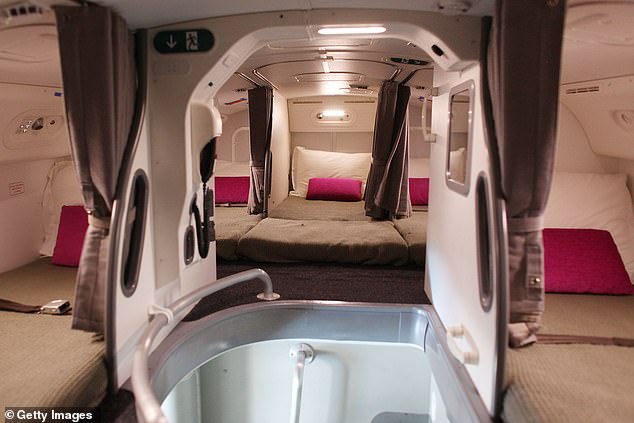
The interior of the crew sleeping quarters of the Boeing 787 Dreamliner is seen during a media tour on February 12, 2012 in Singapore
Carr, who has worked on numerous Boeing aircraft including the 787, 777 and 767, shared her insider perspective on what crew rest compartments actually look like with CNN Travel earlier this week.
There are usually two sets of rest areas.
One is for the pilots – complete with two bunk beds and an armchair – which sits above the cockpit.
Cabin crew then have access to a second area with bunk beds, usually located above the aft galley, where food and drinks are wheeled out.
On older aircraft, these compartments may be located in the cargo hold or simply in a screened area in the main cabin.
“They can be quite comfortable,” Carr told CNN Travel.
‘They have a padded mattress, a vent to circulate air and temperature controls so you can keep it cooler or warmer, and we are provided with bedding, usually similar to the bedding used in business class on our international flights, ‘ she said.
“I like them, but I’m also only about six feet tall, so if you put a six-foot person in them, they might be a little tight.”
The Federal Aviation Administration regulates these sleeping quarters and imposes a litany of requirements on airlines, according to a US aviation authority advisory circular from the Agency from 1994.
For example, the dimensions of each bed must be at least 220 cm long and 30 cm wide. That is a lot thinner than a standard mattress, but about as long as a full XL.
The FAA also mandates that “flight crew sleeping quarters must be located in a location where obtrusive noise, odors, and vibrations have minimal impact on sleep.”
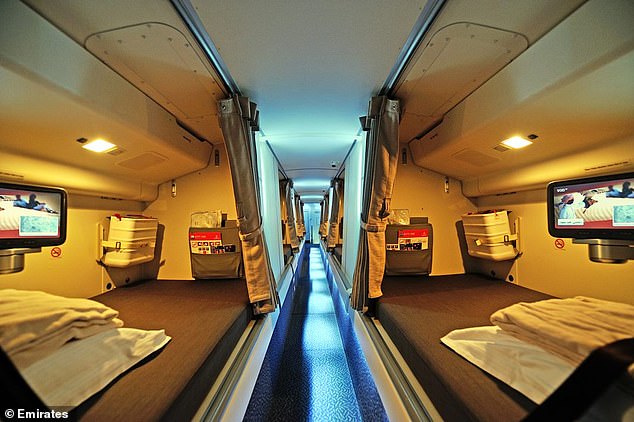
A crew rest area on an Emirates Airlines plane, with wide beds and privacy curtains
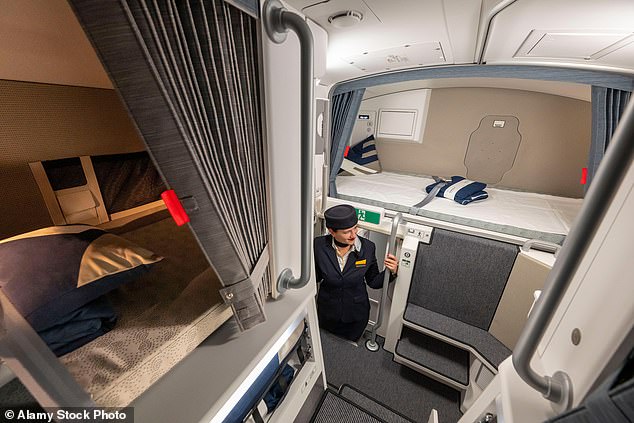
A Lufthansa cabin crew member stands in the cabin crew rest and sleeping area of an Airbus A350-900
A viral video on TikTok posted by a flight attendant in February showed the crew sleeping quarters on a luxury Emirates Airlines plane.
He opens an innocent-looking door that looks like it leads to a bathroom, but actually reveals a spiral staircase leading to what some describe as a “hotel hallway.”
Inside there are at least eight curtained beds, some with televisions next to them.
Many viewers claimed the space was better than business or even first class.
‘Can I pay for my flight? [attendant] to rent it out lol,” someone commented.
Others made ‘mile high club’ jokes, while some claimed the cozy beds made them want to become a flight attendant themselves.
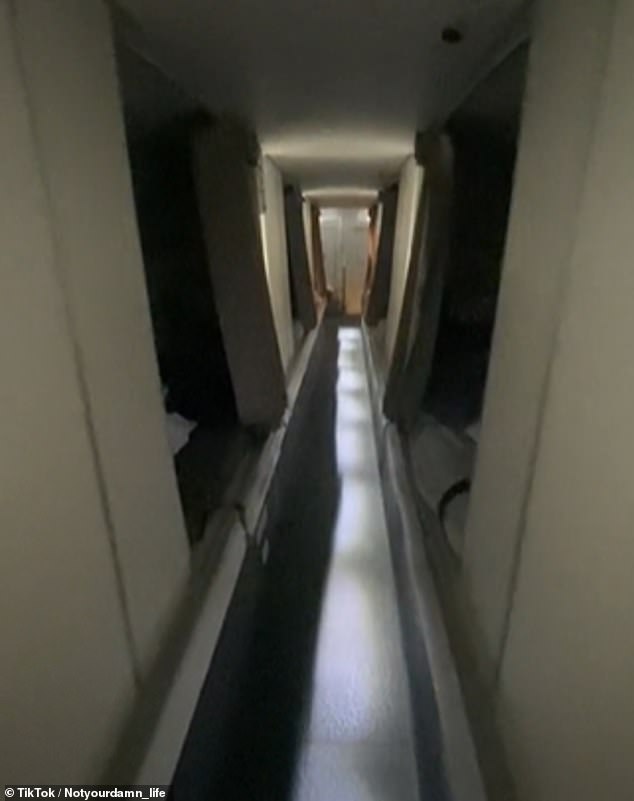
The sleeping quarters for Emirates flight attendants, complete with eight beds on either side of the hallway

Despite most cabin crew not getting access to in-flight entertainment, Emirates flight attendants are given TVs above their beds
But not every plane is as chic as Emirates.
On older aircraft, such as the Boeing 767, the rest areas are in the main cabin and are just armchairs with curtains around them.
‘They are very heavy curtains, they block out light and a lot of noise, but not if you have an energetic crowd on the plane or an upset child. We’ve had passengers open the curtains looking for something or thinking they were going to the galley, so it’s not necessarily the best rest,” Carr told CNN Travel.
United Airlines has the oldest fleet of aircraft with an average age of 16.3 years, while an Emirates aircraft has an average age of 10.3 years, according to data from airfleets.net.
The rest areas are not used on every flight, especially if it is a short domestic journey.
But on long-haul flights, cabin crew members usually spend at least 10 percent of their time hidden from passengers.
“On average, I would say that means about 1.5 hours per long-haul flight,” Karoliina Åman, a flight attendant at Finnair who works on the Airbus A330 and A350 aircraft, told CNN Travel.
“Since we do not have a private space on the plane for our lunch or coffee breaks, this rest period is extremely important and useful for us,” she added.
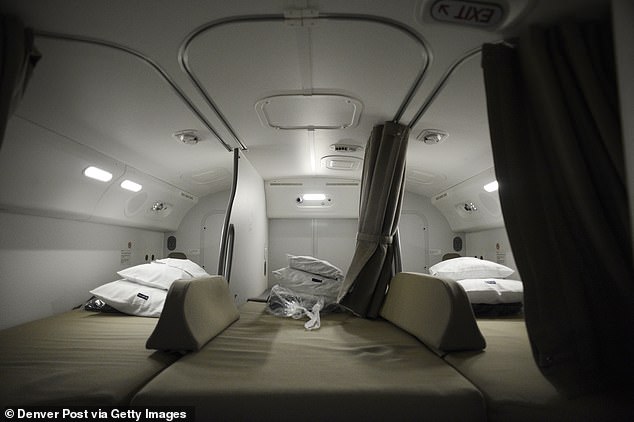
The crew rest area of a Boeing 787 Dreamliner departing for Houston at Denver International Airport in Denver, Colorado
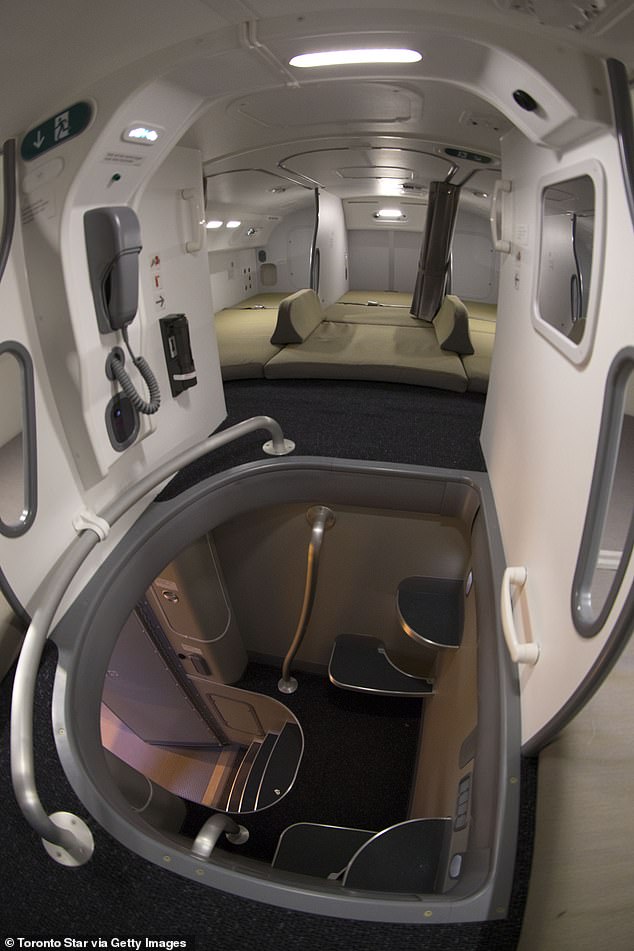
A small staircase leads to a compartment with berths for long-haul crew members on the 787 Dreamliner
She continued, “This is the time during the flight when we don’t answer passenger calls or perform any tasks other than resting, and give our feet and minds their rest as well. The purpose of this rest is to remain alert and ready throughout the flight so that if something unexpected happens, we are ready to take action.”
There is also a hierarchy within the flight crew, with senior employees given more flexibility when resting.
“Everything in our industry is based on seniority, from the schedule you fly, to the routes you can fly, to your days off,” Carr explained to CNN.
‘The longer you’re there the better the benefits and one of those benefits is choosing your crew’s break time – we go by seniority so the person with the most seniority on the flight gets to choose whether he or she prefers the first break or the second break.’
The pilots also need their rest and their compartments are usually located near the cockpit.
Depending on how long the flight lasts, there can be up to four pilots on board, but there must always be two pilots in the cockpit flying the aircraft.
This means that their rest area usually only has two bunk beds and sometimes a seat with in-flight entertainment – which the cabin crew don’t get.
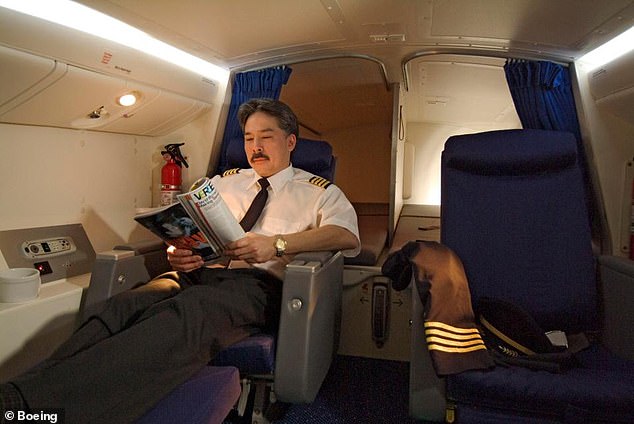
The pilots’ rest area usually only has two bunk beds and sometimes there is a seat with in-flight entertainment, something the cabin crew doesn’t get.
Aleksi Kuosmanen, deputy fleet chief pilot at Finnair, said he likes the rest area on the Airbus A350, which is located above the forward galley.
“It has very good curtains, you can regulate the temperature very well, there is good ventilation,” he said, adding: “You don’t hear anything that happens in the galleys, it’s very quiet and comfortable.”
So next time you’re on board, keep your eyes peeled. But beware that most flight attendants try to keep these areas well hidden.
“You don’t necessarily want to know that your flight attendants are going a little crazy, but at the same time, you’ll be happy when we show up after our little cat has taken a nap, all fresh as a daisy,” Carr said.
